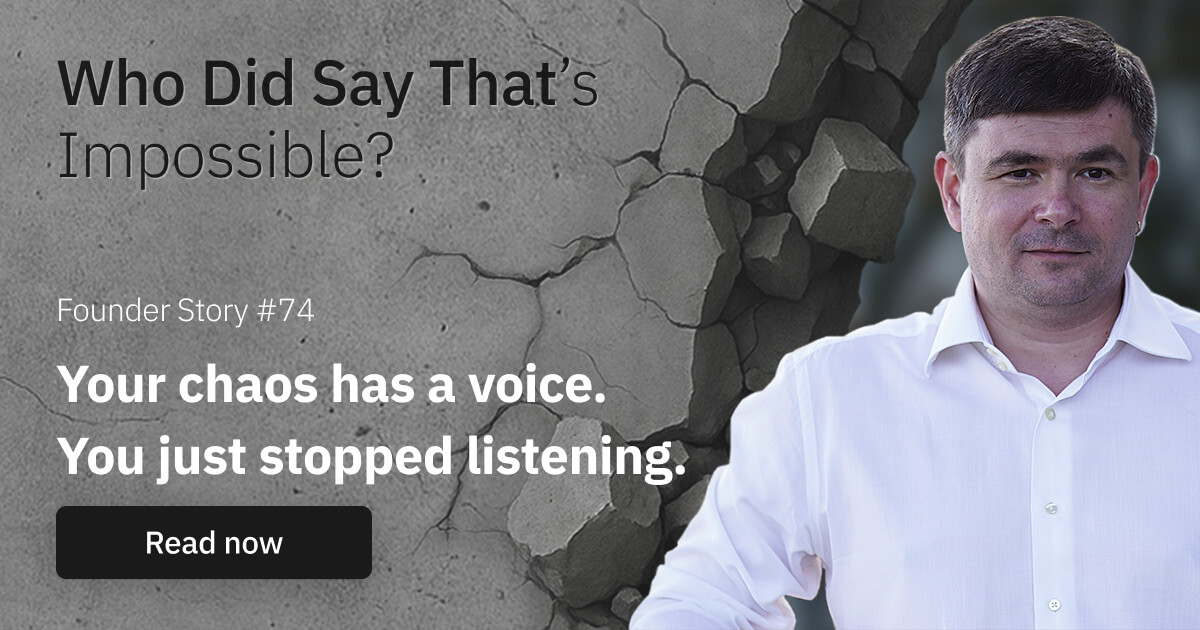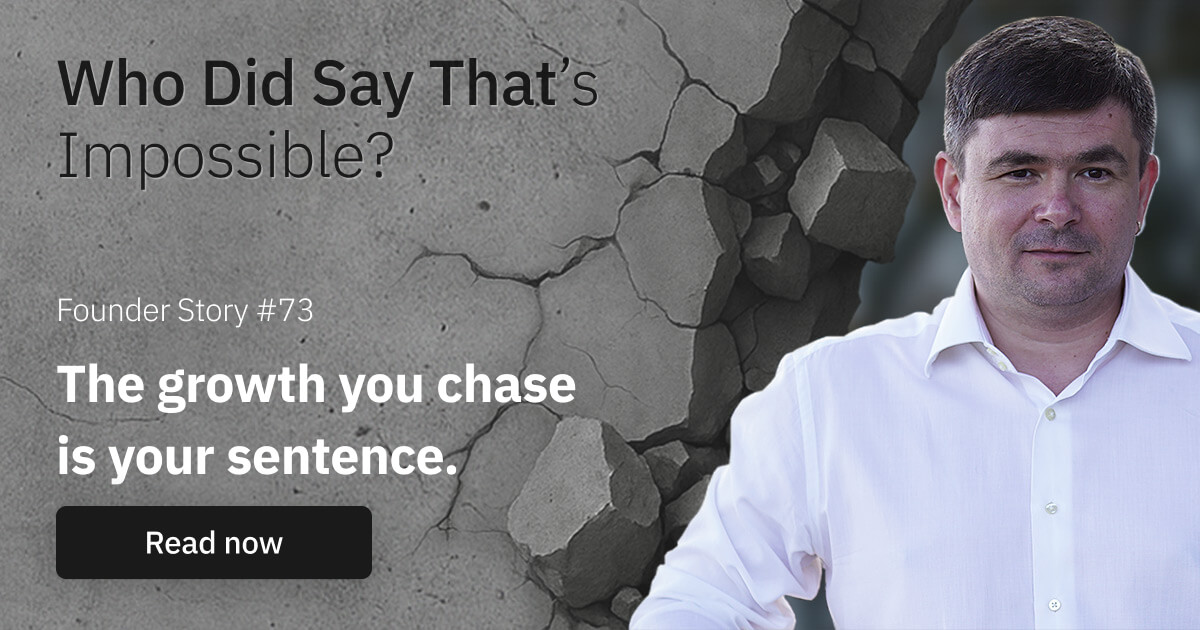You say you’ve got ops. Sure?
Or minute of realizing you’ve been duct-taping your business for years
When I started my business, I was like most founders — just trying to build something that worked. At first, it was simple. One person. Then two. Then five. Even when we grew to fifteen, I still had a sense of what was going on. I knew every project, every client, every conversation.
Now I understand why it felt so manageable back then.
I had a partner who took full ownership of sales. He found the clients, built relationships, brought in deals. And I ran operations — hiring, managing projects, handling internal systems, expenses, admin, team issues.
In other words, my plate was full, but not overflowing. I didn’t touch marketing, didn’t handle outreach, didn’t chase new leads. I lived inside the walls of delivery — and I thought that was running a business.
Back then my small team and I worked in the same office. If something went wrong, we’d fix it over lunch. If a question came up, I’d walk over to their desk and get an answer in thirty seconds. The system worked — or so I believed.
Then the crisis hit.
The day the ground disappeared
It was 2008. One morning, my partner come and said quietly, “Sales are gone. No new clients. We’ll have to let half the team go.”
I remember sitting there, speechless. Half the team — the people who’d trusted us, who’d built this thing with us. For me, that wasn’t just bad news. It was a personal failure.
So I made a decision: I would find projects myself. I would protect the team, no matter what it took. And that’s where everything fell apart.
Overnight, my world tripled in size. Now I was the head of sales and the head of delivery.
I was chasing leads, closing deals, managing accounts, overseeing projects, hiring, mentoring, calculating payroll, and still trying to be the founder everyone looked up to. There was no time to think. No time to breathe.
I remember days that started at 6am and ended after midnight — when I’d reread emails three times and still couldn’t remember what was urgent and what was noise. We survived that period, barely.
I found projects, paid salaries out of my own pocket, and even hired a small sales team to keep things moving. But survival came with a hidden cost.
Now I had two teams — the one I built and the one that came from my partner’s side. Different systems, different managers, different expectations.
And I had no idea what was actually happening anymore.
When control becomes chaos
Client issues started piling up. Missed deadlines. Forgotten tasks. Refunds.
Every conversation felt like deja vu — explaining the same things over and over to people who still didn’t get it.
Managers came to me with questions they should’ve answered themselves. Team members worked “as they understood it,” not as it should be done. And slowly, the foundation we had built started to crack.
I wasn’t angry at them. I was terrified. Because deep down I knew: I was the bottleneck.
Everything depended on me — and I couldn’t hold it anymore.
That was the moment I finally accepted the truth: What worked for a 5-person team doesn’t work for 20. What used to be “communication” had become chaos.
The rebuild
I was lucky to connect with the founder of a much larger agency.
He walked me through how they’d structured their operations — clear roles, processes, accountability, and something I’d never considered before: reporting. That conversation changed everything.
So we rebuilt everything from scratch.
We built templates for everything — proposals, briefs, reports.
We created a real knowledge base on Confluence. It was messy at first. Half the team ignored it. The other half didn’t know what to add.
But we kept pushing.
We started defining responsibilities — who owns what, where things flow, how information moves. And most importantly, we built the first version of a simple reporting rhythm. Not corporate dashboards. Not endless meetings. Just the right kind of visibility.
Because here’s what I learned the hard way: bureaucracy is an invisible tax on every business. It’s what happens when your people are busy writing reports instead of doing the work. When “status calls” cost more than the projects themselves.
We decided we wouldn’t pay that tax. We created two levels of reporting:
- Tactical reports, owned by managers — short, weekly summaries of what’s happening.
- Strategic visibility, for me — concise updates that gave a pulse of the company without drowning me in details.
Then we automated as much as we could through Slack. Every Friday, the system pinged each team member with three quick questions.
In 15 minutes, everyone filled their updates. Managers compiled them into a single weekly report. No meetings. No back-and-forth.
For the first time in months, I could open one document and see the entire company. No guessing. No chasing. No micromanaging. Just clarity.
That visibility became my lifeline. It gave me back the one thing founders lose first — perspective.
The real lesson
Looking back, that’s when I finally became a founder, not just an operator.
Because the truth is, chaos doesn’t happen when you grow. It happens when you keep running the business the same way you did before you grew. What worked when you had 5 people will bury you at 15. And if your systems still depend on conversations instead of structure —you’re not scaling, you’re patching.
I used to think freedom would come after we hit a certain size. Now I know it only comes after you install structure.
You can’t scale glue. It dries. It cracks.
And eventually, it breaks.
- Eugene
Join the “most offbeat” Businessletter on entrepreneurship.

Hi, I’m Eugene.
Over the past 20+ years, I’ve grown an international agency from one-person freelance to a multimillion-dollar business. I’ve led teams, scaled systems, burned out, rebuilt, and learned (the hard way) what it really takes to run a business that doesn’t consume your life.
I help them make sense of complexity, design simple systems, and create the kind of business they actually want to run.
More Stories
Founder Stories

Your chaos has a voice. You just stopped listening
Or minute of realizing it’s not about broken communication

The growth you chase is your sentence
Or minute of realizing that not all growth is progress


